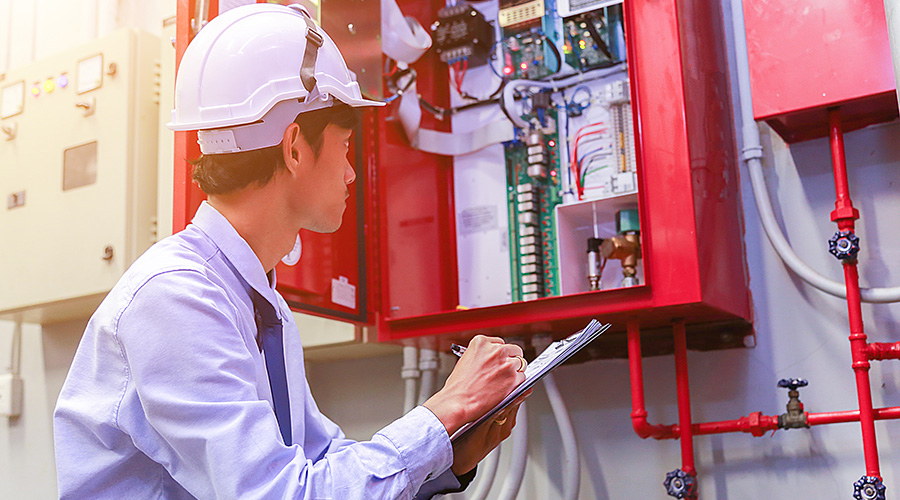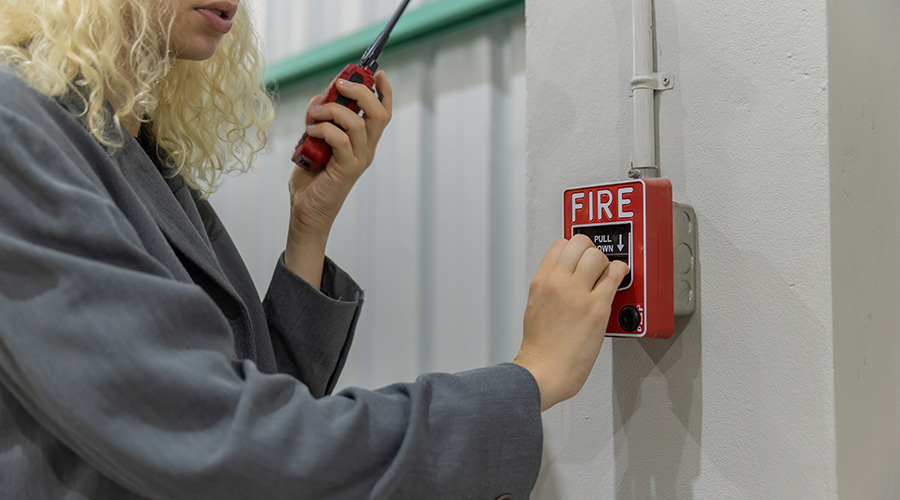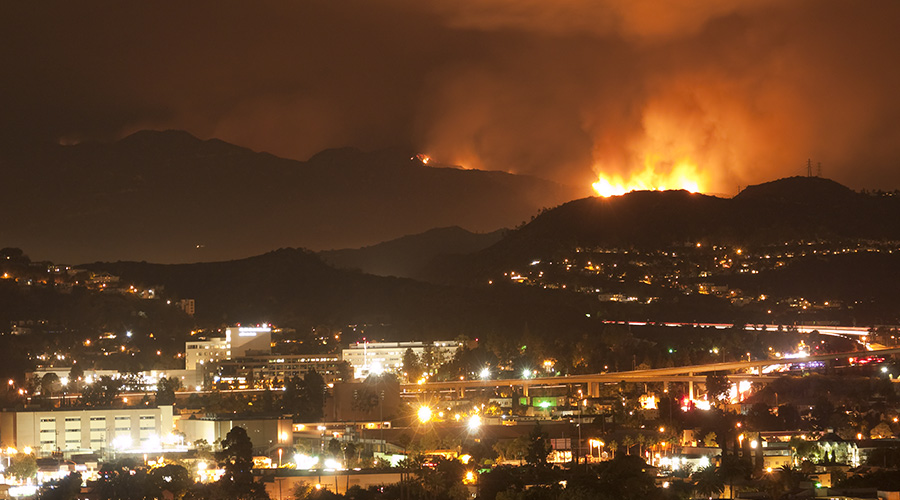Planning Your Next Fire Alarm System Upgrade
Imagine this fairly common scenario: The fire alarm system for your facility has reached the end of its operational life, and it's time to upgrade the system. You will want to ensure the system upgrade meets the budget, the requirements of the state and local codes that govern your facility, and your organization's fire protection goals.
A first question is whether you actually know what those organizational fire protections goals are. If you don't, now would be a good time to find out. Your organizational fire protection goals will most likely form around a site-specific analysis of the following categories: life safety, property protection, mission continuity, heritage preservation and environmental protection.
Life Safety: Having a life safety goal is one step towards being able to provide occupants adequate warning, so they will have time to escape when a fire occurs. This goal typically involves the use of total detection coverage, primarily using smoke detectors. NFPA 72-2010, National Fire Alarm and Signaling Code, defines "total coverage" as providing detection in all rooms, halls, storage areas, basements, attics, lofts, above suspended ceilings, closets, enclosed stairways, dumbwaiter shafts, elevator shafts and chutes. Obviously, the ambient environmental conditions in some of these areas may make it inappropriate to use smoke detection — attics, for example.
But, the intent of this life safety goal is to provide early detection and early warning for both the occupants of the facility and for the responding public fire department or private corporate emergency responders.
Property Protection: With a property protection goal, the owner will strive to limit the damage to the facility and meet special requirements of the insurance company. To meet this goal, the owner may choose to detect a certain size fire or simply rely on an automatic sprinkler system. If the goal is to detect the fire sooner than sprinkler system actuations, then the fire alarm system design will certainly require more detection than the minimum detection required by the building code. Again, depending on the choice of detection and the limits placed on the size of fire detected, limiting the extent of damage can provide similar results for the environment as the life safety design.
Mission Continuity: The goal of mission continuity is to preserve the ability of the organization to stay in business after a fire. A typical building code fire alarm system design will usually not meet this goal. The extent of the detection needed to meet this goal could, in some cases, greatly exceed that used for a detection design to meet a life safety goal.
Heritage Preservation: In a few instances you may be dealing with a historic building. In this case, the fire protection goal for heritage preservation requires a detailed analysis of the elements within a facility that need to remain intact following a fire. You will also need to ensure that the installation of the fire alarm system does not disturb or destroy the historical elements of the facility. Even if your facility has no historical significance, you may have business records or other business elements that provide continuity to your operations that you will need to preserve during a fire. You must carefully consider how to best protect such elements.
Environmental Protection: In the situation where the goal of environmental protection is primary, the impact on the environment that a fire in a particular facility might have trumps other goals. A fire in a paint warehouse built near the aquifer for a large city could cause an environmental disaster if the water runoff from the firefighting efforts contaminates the water supply. A facility may include building materials that were allowed in the era when the building was built, but over time research has determined that those materials represent contaminants or emit toxic gases when burned in a fire. You will need much more information regarding the environmental impact of a fire in an older property. In such cases, every element of the fire protection design should consider how to rapidly contain a fire to the smallest possible area within the facility, and promptly automatically extinguish the fire.
Some environmental benefits can accrue from total smoke detection coverage. Getting the fire department to the building while the fire remains small will keep the amount of water applied to the fire to a minimum. This will, in turn, limit the damage to the building. Less damage means that the restoration will dispose of less material in the landfill. Less water application means less contaminants and water run-off into the aquifer. These results help to reduce the fire's impact on the environment.
Code and Other Questions
Once you have clearly defined the fire protection goals for your facility, you should also become aware of any local jurisdictional requirements that may have been developed since the first system was installed. What building code and fire code has your jurisdiction adopted? Does the jurisdiction have any special requirements that exceed those in the building code or fire code?
As an example, in February 2003, the fire in the Station Nightclub in West Warwick, R.I., resulted in legislation affecting every business in the state. The legislation eliminated the grandfather clause from the codes and provided greater enforcement power to the state and local fire marshals. The new laws affected every type of business and required mandatory fire alarm system upgrades, mandatory sprinkler system installations and upgrades, and adoption and enforcement of the existing building provisions of Life Safety Code.
As with any upgrade you want to avoid "crisis" installations as they will increase costs. If you are told you need to upgrade your fire alarm system immediately then you should hire a professional fire protection engineer to negotiate in your stead.
You also need to know how the fire alarm system must perform. You will need to determine the system's matrix of operation. Said another way, what do you expect the systems to do? For instance, in addition to sounding an alarm to notify the occupants of your facility, will the system need to interface with other fire protection systems in the building? Do you have new emergency communications needs given various severe weather events or possible terrorist activities? Who will monitor the system? Will you use an in-house security force or a contracted monitoring company? Have numerous false alarms plagued your existing system? Has your existing system produced high maintenance costs? Does your company have a preferred fire alarm system vendor that essentially locks you into their product offerings? In addition to notifying the building occupants and the fire department, does your facility have other fire protection systems that the fire alarm system must control or monitor? How do you plan to notify the fire department or your own emergency responders?
All of these answers will impact the upgrades you will make to your fire alarm system and how sophisticated those upgrades will need to be. Knowing all of the goals and codes will help you better understand what your fire alarm system upgrade will entail.
Related Topics:













